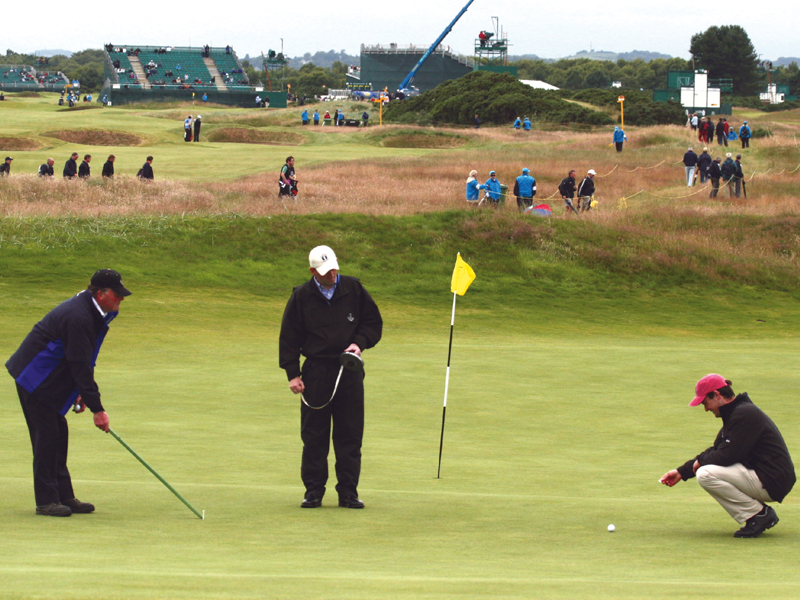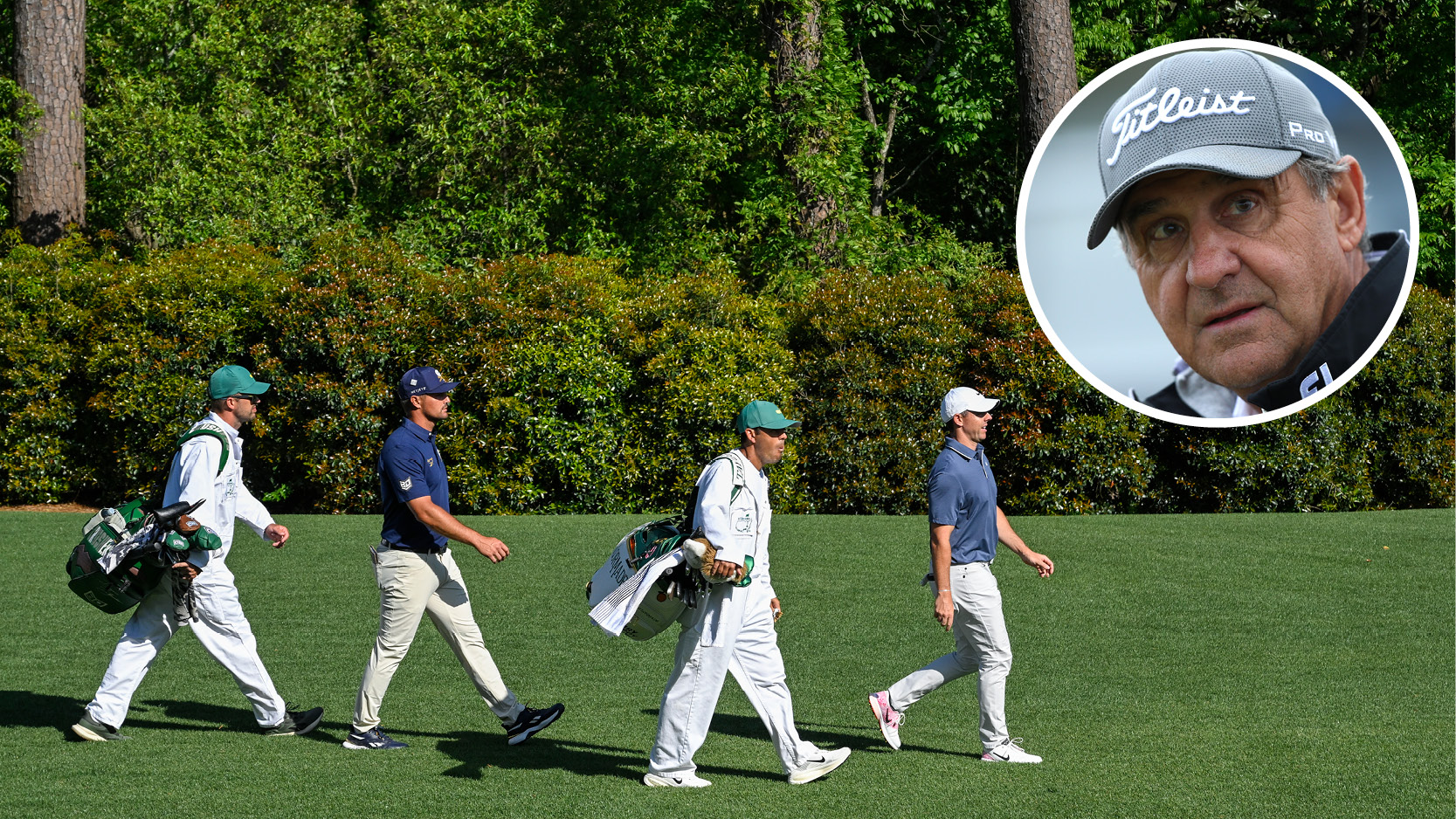The science behind a perfect green
What makes the perfect green? There's more to it than pure speed


What makes the perfect green? There's more to it than pure speed, according to turfgrass agronomists Richard Windows and Henry Bechelet
All we golfers want from our greens is the chance to shine, whether for birdie, bogey or even worse. Greens are such an important part of any course, and they need to be good to make an enjoyable round.
Club golfers tend to judge the quality of greens on their speed, and this is also how we compare one course with another. A simple measure of green speed can be provided with a stimpmeter – in feet of ball roll – and this number is easy to determine and understand. The true golfer, however, will judge the quality of a green on more than just a flat measure of ball roll.
Firm, not hard
Ideal greens combine firmness, smoothness and trueness. With the correct (and consistent) blend of these factors the surface is 'receptive': it takes and releases the ball, which then rolls out under its own weight without too much 'chatter'.
So what do these factors really mean? A firm (not hard) green will be receptive to a well-struck approach shot. The ball should impact the surface, bounce forward, hold and then release. The turf should recover after impact with minimal pitch marking. To make a firm green we control the accumulation of organic matter at the turf base. Aeration and regular top dressing keep the base from becoming unduly soft.
To help quantify the firmness of putting surfaces, The R&A has defined surface firmness in terms of 'Resilience', 'Stiffness' and 'Penetration'. With specialist equipment all these elements can be measured, and these objective measures add to our understanding of a good green and how to maintenance one.
Related: what does an agronomist do?
Get the Golf Monthly Newsletter
Subscribe to the Golf Monthly newsletter to stay up to date with all the latest tour news, equipment news, reviews, head-to-heads and buyer’s guides from our team of experienced experts.
Smooth and true
Smoothness and trueness are the two other key qualities. On a smooth and true green, the ball will hold its line, take the break, roll and finish-out freely. The R&A has also funded the development of a machine at the Sports Turf Research Institute (STRI), working with Sheffield Hallam University, to quantify surface smoothness and trueness. It’s all part of optimising our golf courses to reward real skill rather than just straight target play.
Firm, smooth and true surfaces can be achieved in a number of ways, but one way might be to promote fine fescue and bentgrass species within the sward. Bent or fescue dominance brings improvement in the playing qualities without being as vulnerable to disease and drought as the currently dominant annual meadowgrass. These finer grasses can only be encouraged by attentive greenkeeping.
Greenkeeping is a skilled profession, and we have a long history of knowledge behind us to help us create these ideal surfaces. The problem is that golfers don’t really appreciate what it takes to make real quality putting surfaces, and the demand for speed can lead to missing the more essential playing qualities. Your club needs to agree what its aiming for in its putting surfaces and then support the greenkeeper in making this happen.
Take advice if you need to – and bear in mind that STRI agronomists won’t compromise on the long-term development of playing quality. You will need to commit to your greens by proper resourcing, and by making time for the necessary work to be done.
Related: what does a golf course manager do?
Look beyond the stimp
The stimpmeter is an easy measure of green speed but it can be harmful if used as the sole measure of success. Thankfully, better measurement tools are on the way, which will promote the key characteristics of firmness, smoothness and trueness, qualities that can be sustained throughout the year if managed correctly.

Nick Bonfield joined Golf Monthly in 2012 after graduating from Exeter University and earning an NCTJ-accredited journalism diploma from News Associates in Wimbledon. He is responsible for managing production of the magazine, sub-editing, writing, commissioning and coordinating all features across print and online. Most of his online work is opinion-based and typically centres around the Majors and significant events in the global golfing calendar. Nick has been an avid golf fan since the age of ten and became obsessed with the professional game after watching Mike Weir and Shaun Micheel win The Masters and PGA Championship respectively in 2003. In his time with Golf Monthly, he's interviewed the likes of Rory McIlroy, Justin Rose, Jose Maria Olazabal, Henrik Stenson, Padraig Harrington, Lee Westwood and Billy Horschel and has ghost-written columns for Westwood, Wayne Riley, Matthew Southgate, Chris Wood and Eddie Pepperell. Nick is a 12-handicap golfer and his favourite courses include Old Head, Sunningdale New, Penha Longha, Valderrama and Bearwood Lakes. If you have a feature pitch for Nick, please email nick.bonfield@futurenet.com with 'Pitch' in the subject line. Nick is currently playing: Driver: TaylorMade M1 Fairway wood: TaylorMade RBZ Stage 2 Hybrid: Ping Crossover Irons (4-9): Nike Vapor Speed Wedges: Cleveland CBX Full Face, 56˚, Titleist Vokey SM4, 60˚ Putter: testing in progress! Ball: TaylorMade TP5x
-
 Rory McIlroy's Sports Psychologist Explains Why He 'Didn't Talk' To Bryson DeChambeau In Masters Final Round
Rory McIlroy's Sports Psychologist Explains Why He 'Didn't Talk' To Bryson DeChambeau In Masters Final RoundDeChambeau raised eyebrows at Augusta National when claiming that McIlroy wouldn't engage in conversation during the final round of The Masters
By Jonny Leighfield
-
 RBC Heritage 2025 Picks, Odds And Predictions
RBC Heritage 2025 Picks, Odds And PredictionsAfter a thrilling week at The Masters, the PGA Tour returns to Harbour Town Golf Links and the fifth Signature Event of 2025
By Matt Cradock